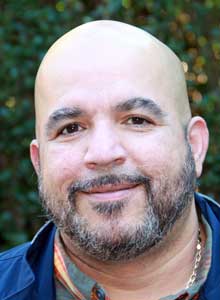Hold the course
How to handle investments in times of market volatility and/or downturn
This advice was originally written following the bursting of the dot com bubble in the early 2000s. At that time the Standard & Poor’s 500 Index was nearing a 50% decline that had started over two years before from record highs.
Again in 2007-2008, the Standard & Poor’s Index is approaching a drop of 50% from its record high just 12 months prior. As was stated in 2003, in the depths of a two-year decline, we reiterate again..hold the course!!!!
In 2003, the Committee’s advice proved to be sound. The Committee believes it will prove to be the correct strategy once again.
Protracted and deep stock market declines, such as the one we are now living through, invariably cause many, including those on vestries, to feel great anxiety. As misplaced euphoria pushed the stock market ever higher in the late 1990s, the reverse emotions certainly are felt in the decline that follows. It is natural and normal. It also is what causes over-valuation and high risk going up and leads to dramatic bargains on the down side.
We are writing this statement to reassure vestries during this difficult time, one in which fear can all too easily overwhelm reason.
The strongest emotion gripping investors is that prices will continue to decline endlessly. Clearly that is not logical. Perhaps the following will reassure those who are fear-burdened:
The 15 years from 1973 through 1987 were framed by a horrible two-year stock market decline (1973-1974) and a steep collapse (during 1987). Despite those anxiety-ladened experiences, the S&P 500 index compounded at a healthy 9.8% annual rate.
The worst 10-year period for the stock market since the 1920s was 1929 through 1938. The S&P compounded at an annual rate of 0.9%. If the S&P from 2000 through 2009 does nothing more than merely match that dismal number, despite the terrible first three years, for the remaining seven years S&P will grow at a 5.6% compound annual rate.
Equities are volatile. They were volatile when your congregation began to invest in equities, and they will remain so into the future. The reason is clear. Only one-third of stock pricing is determined by economic factors. The remaining two-thirds derive from psychological forces. What has been playing out over the past several years has something to do with weakness on the economic side, but much more to do with very powerful emotional reactions that overtake the rational mind.Stay rational.
Said differently, certainty is the greatest enemy of good investment results. No one knows what will happen. The future is unknowable, as are future returns from both stocks and bonds. Risk is unavoidable, whether in stocks, bonds or cash. (Bonds also have years of negative total returns.) Therefore the key to all investment effort is to get adequately paid for taking risk and to diversify across the different asset classes. In the late 1990’s, caught up in near-euphoria as the market rose, many believed that “nothing could go wrong.” Today it may appear that “nothing can go right!” Then, stocks appeared to be the “safe” asset class, and bonds were scorned. Today, bonds at 45-year low interest rates appear “safe”, and stocks, down 45-75% appear risky. Again, risk is always present; the question is which asset class is cheapest and so most likely to pay the investor an adequate return. It’s our job as fiduciaries not to allow feelings to substitute for the lessons of markets in the long term, and not to allow fear to prevent us from acting in accordance with those lessons.
The Trustees’ Investment Committee has long reminded vestries of their responsibilities regarding their congregations’ long- term investments. The two key responsibilities are (1) the preservation of the funds’ purchasing power over time and (2) the provision of a prudent amount of money every year to fund current activities.
Those who manage parish investments are fiduciaries, with the responsibility to hand over to their successors a healthy and vital institution. So fiduciaries must take a long- term view. In order to preserve the purchasing power of your investments, it is not enough to preserve the original capital. Since the 1920s inflation has averaged about 3% a year. Therefore, to preserve the purchasing power of your investments, they must return on average 3% more than you take out to fund current activities. If all your investments are in cash [that is CDs and money market funds] and if you use all the interest every year, you guarantee that your capital will erode at the average rate of 3% per year. You may still have the $100,000 you had in 1992, but in constant dollars that $100,000 ten years later is worth $76,000. You cannot discharge your fiduciary responsibility by handing to the next generation an endowment ravaged by inflation.
It is possible to preserve the purchasing power for tomorrow and make funds available for today only by investing in a mix of stocks, cash and fixed income instruments. Since 1926 stocks on average have returned 11% per year before inflation, 8% per year after accounting for inflation. Bonds have had an average return of 5% before inflation, 2% after inflation. A portfolio weighted somewhat toward equities allows a spending rate of 5%. A portfolio entirely in bonds permits only a 2% spending rate. The declines in the equity markets since 2000 have not markedly affected these long-term historical figures.
Everyone knows that it is good to “buy low and sell high”, but as we have seen recently, it is not clear where the bottoms and the tops of the markets are. Maintaining a 60%/40% allocation between equities and fixed income instruments means that you will tend to buy low and sell high. As stocks rise, the percentage of stocks in your portfolio rises. When you rebalance to maintain your allocation ratio, you are selling stocks high. As stocks fall and the percentage of stocks in your portfolio declines, you rebalance to get back to your asset allocation by buying stocks at lower prices. Rebalancing would have protected congregations from some of the excesses of the late 1990s. Likewise rebalancing can redirect the congregation to equities when they become better and better values.
Maintaining an asset allocation is counterintuitive, and it doesn’t always feel good. You are investing against the widely reported trends in the markets. When stocks have a good year, the returns in your prudently diversified portfolio will be lower than an all-equity portfolio. When stocks decline, it is no easy matter to move more of your assets into the stock market.
There is risk in the stock market on the one hand, but there is the certainty of inflation on the other. Maintaining an asset allocation and exercising the discipline necessary not to spend too much from your investments is the only way to fulfill your fiduciary responsibilities to the people who will worship in your congregation in years to come.
In 1998, when the equity markets were returning 30%+, it was unwise to be too heavily invested in stocks. Today, after three years of declines in the stock markets, it would be very unwise to sell what you have in stocks. Now is the time to buy stocks, if necessary, to maintain your asset allocation. For instance, it can be argued that the riskiest asset class today is long-term government bonds. Interest rates are at half-century lows, and inflation is a nominal 2%.
No matter what the trend, no matter what the climate, we encourage you to:
- Identify your long-term invested funds. Separate them from the reserves you have for cash flow and capital improvements.
- Create one pool with your long-term invested funds to maximize your ability to make an asset allocation.
- Define your investment strategy and your investment goals. Use the diocesan investment guidelines.
- Set your asset allocation and a spending rate commensurate with the asset allocation.
- Use “arms-length” managers, and invest in mutual funds, not individual issues. Consider the Diocesan Investment Trust.
- Calculate the total return of your portfolio quarterly.
- Measure the performance of your portfolio quarterly against appropriate benchmarks and make complete but simple and comprehensible reports to the Vestry.
- Rebalance your portfolio as needed to maintain your asset allocation.
- Be mindful of the ongoing need for principal contributions to the funds. See the diocesan investment guidelines.
If what we have recommended does not describe the way you are handling your investments, we urge you to contact the diocesan Controller’s office to arrange a consultation. The long-term financial health of your congregation is at stake.
If you are handling your investments in accordance with these comments, the Investment Guidelines, and the reporting tools available on the diocesan website, then we urge you to hold the course.
Finance and Administration Contacts
Ms. Karin Almquist
Controller
Office: 212-316-7534
kalmquist@dioceseny.org
Ms. Chontel Simmons
Director of Operations and Human Resources
Ms. Sara Saavedra
Convention Officer, Assistant Secretary of Convention, Diocesan Benefits Coordinator, Secretary to the Standing Committee
Office: 212-316-7423
Fax: 212-316-7420
ssaavedra@dioceseny.org
Mr. Robert Santiago
Senior Accounting Manager
Office: 212-316-7451
rsantiago@dioceseny.org
Ms. Michele Kearney
Executive Director, DIT
Office: 212-932-7312
Fax: 212-316-7405
mkearney@dioceseny.org
Ms. Mildney (Mai) Dal
Senior Accountant
Office: 212-316-7434
Fax: 212-932-7328
mdal@dioceseny.org
Ms. Zoraida Marte
Payroll Manager
Office: 212-316-7478
Fax: 212-932-7328
zmarte@dioceseny.org
Ms. Charmagne Castillo
Staff Accountant
Office: 212-316-7435
Fax: 212-932-7328
ccastillo@dioceseny.org
Mr. Lukasz Krukowski
Junior Accountant – Accounts Receivable
Office: 212-316-7479
lkrukowski@dioceseny.org
Mr. Andrew Gary
Assistant to the Chief of Finance and Operations, Communications & Editorial Assistant
Office: 212-932-7322
Fax: 212-932-7323
agary@dioceseny.org
Documents and Files










